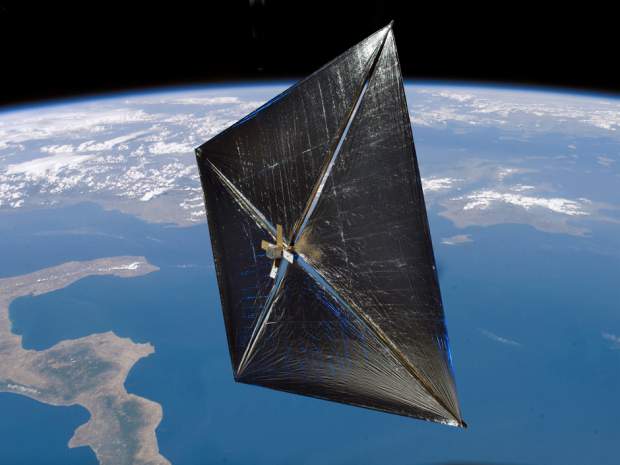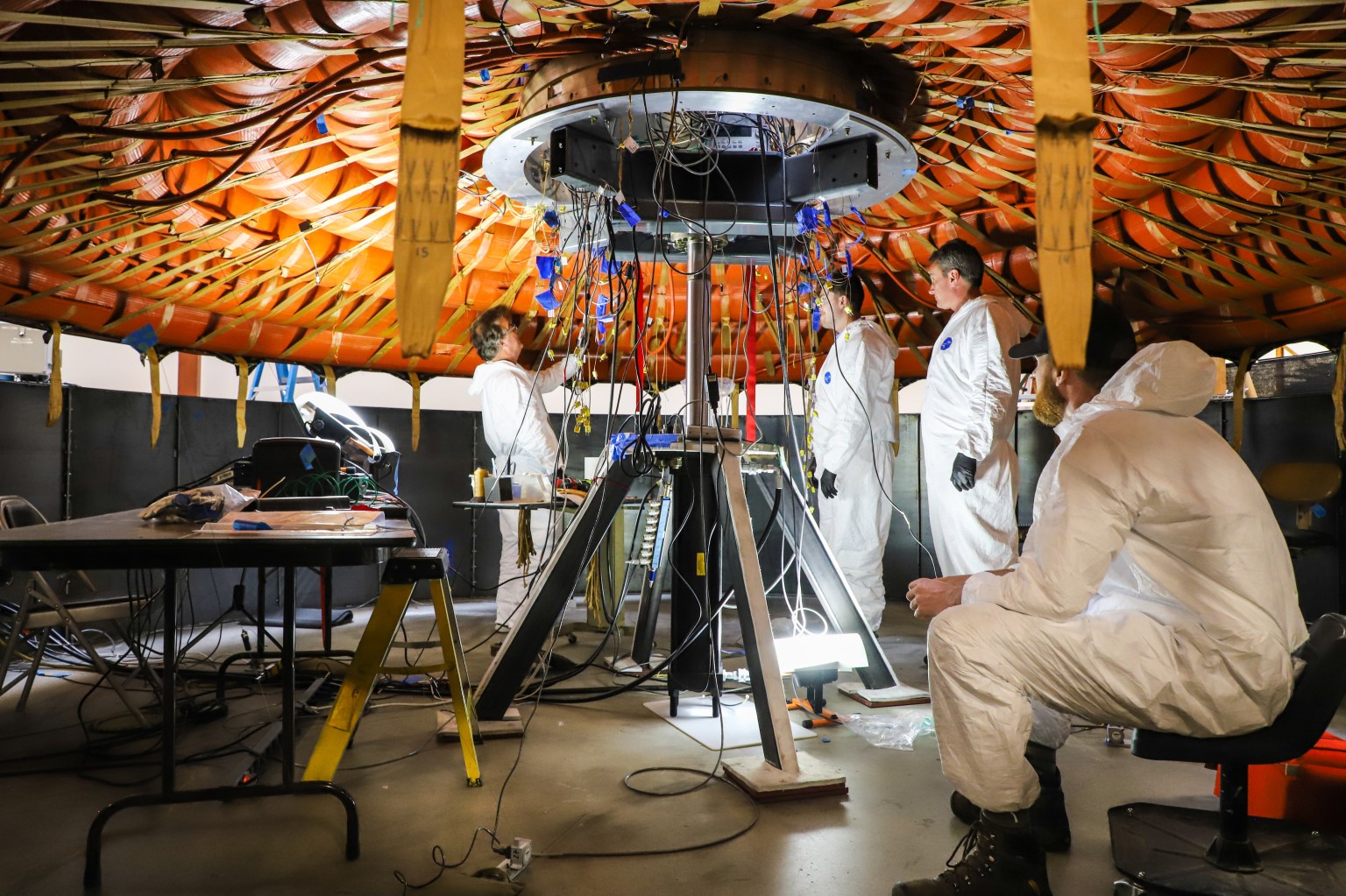In 2011, a NASA team embarked on the development of a Technology Demonstration Mission known as the Solar Sail Demonstrator which intended to prove the viability and value of using a huge, ultra-thin sail unfurling in space and using the pressure of sunlight itself to provide propellant-free transport, hovering and exploration capabilities.
Led by industry manufacturer L’Garde Inc. of Tustin, California, and including participation by the National Oceanic and Atmospheric Administration, the Solar Sail Demonstrator project was built upon successful ground-deployment experiments led by L’Garde in 2005-2006 at the Plum Brook Facility in Sandusky, Ohio, a research laboratory managed by NASA’s Glenn Research Center in Cleveland. It also leveraged the successful deployment of the NanoSail-D sail, a 100-square-foot test article NASA launched to Earth orbit in 2011 to validate sail deployment techniques.
Once proven, solar sail technology could enable a host of versatile space missions, including flying an advanced space-weather warning system to more quickly and accurately alert satellite operators and utilities on Earth of geomagnetic storms caused by coronal mass ejections from the sun. The technology also could help remove some of the more than 8,000 pieces of orbital launch debris ringing the planet; conduct station-keeping operations, or hover at high latitudes above Earth for communications and observation; and drive a variety of propellantless, deep-space exploration and supply ferrying missions.
The planned test flight of the Solar Sail Demonstrator — dubbed “Sunjammer” by its designers in honor of the 1964 Arthur C. Clarke story of the same name, in which he coined the term “solar sailing” — was intended to deploy and operate a sail approximately 124 feet on a side. That’s almost 13,000 square feet — seven times larger than any solar sail tested in space to date. But when collapsed, it was the size of a dishwasher and weighed just 110 pounds. Attached to a 282-pound disposable support module, the Sunjammer could be packed into a secondary payload on a rocket bound for the Earth-Sun Lagrange Point L1.
The sail was intended to be flight-tested in 2015, launched aboard a Falcon 9 rocket and then deployed and unfurled in space to catch the sunlight, while researchers tested attitude controls and assessed sail stability and their ability to trim. They also sought to execute a navigation sequence with mission-capable accuracy.
The project was concluded in 2014 prior to flight testing, with valuable lessons learned and project data maintained for use by future NASA and commercial space sail projects.
NASA’s Technology Demonstration Missions are sponsored by the agency’s Space Technology Mission Directorate in Washington.
R































